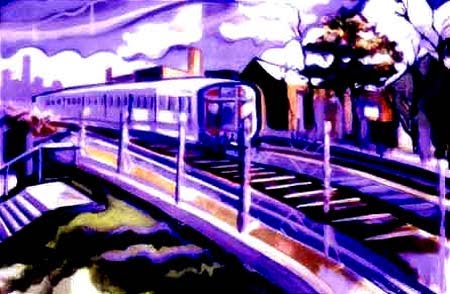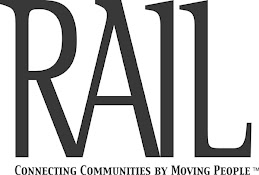Providers: TriMet; City of Portland; Amtrak
Modes: light rail, streetcar, intercity rail
Unique routes: 10, 1 pending (4 TriMet MAX light rail; 3 Amtrak; 2 City of Portland Streetcar; 1 TriMet WES regional rail)
Distinctive stations: Portland Union Station
Equipment: TriMet MAX light-rail vehicles; City of Portland Streetcar vehicles; TriMet WES DMU trainsets; Amtrak Cascades trainsets; Amtrak Superliner trainsets
In my Runners-Up post, I explained that a number of West Coast regions were difficult omissions from this Top 10 list: San Diego; Seattle-Tacoma; Vancouver. Portland is the reason why. It doesn't have the number of unique modes as Seattle-Tacoma, nor is its light-rail network as old as San Diego's or as efficient as Vancouver's SkyTrain system. But the reason why Portland earns a Top 10 spot is the degree to which passenger rail is seen as a force of innovation in the PDX area. It coined the concept of the modern American streetcar in the early 2000s and serves as the case study for the power of urban transit-oriented development.
Portland earned its progressive transit bona fides when it opened its original MAX line from downtown to Gresham in 1986, opting for the nascent rail mode over highway expansion. The concept caught on and led to the westward extension of the line to Beaverton and Hillsboro in 1998, followed by the Red Line to Portland International Airport (PDX), which debuted the day before September 11th, 2001. Just months earlier, the Portland Streetcar re-introduced the long-dormant rail mode to the urbanism playbook and urban transit planning hasn't been the same since. To see MAX trains and Portland Streetcars interact with the many signs of vitality in the city's downtown is to experience a place unlike any non-traditional rail transit region in North America.
MAX lines now fan out in all directions and a second route was added to the Portland Transit Mall through downtown to relieve congestion with the opening of the Green Line in 2009. This fall, the launch of the Orange Line to Milwaukie will open the signature Tilikum Crossing transit/bicycle/pedestrian-only bridge, which will also complete the circuit of the Streetcar's Central Loop route. That project – opened in 2012 – complements the initial Streetcar line (now dubbed the North-South Line), bringing the mode's accessibility to neighborhoods on the east side of the Willamette River. The city used to run a historic vintage trolley service through downtown, first on MAX tracks and a short spur to Holladay Park (which still exists) and then the Streetcars' but the vehicles are now set to head to St. Louis for the Delmar Loop Trolley project there.
Back on the west side, the Westside Express (WES) route south from MAX's Beaverton Transit Center to Wilsonville is one of those quirky lines that helped push Portland into the Top 10. Your blogger attended its opening day festivities in 2009 which introduced Diesel Multiple Unit (DMU) trainsets built by Colorado Railcar that could operate on the same tracks at the same time as freight trains. Colorado Railcar has since gone out of business, leaving WES' DMUs the only operating example of that model. Like a number of other DMU-operated regional rail lines (namely, New Jersey' Transit's RiverLine and NCTD's Sprinter), WES does not reach downtown Portland, instead connecting passengers with MAX's Blue and Red lines. Future extension's to Salem and Eugene along the route's former Oregon Electric Railway line are possible.
In downtown Portland, Union Station is a fitting anchor for the region's passenger rail network. With both MAX and Streetcar lines in close proximity, the 1896 facility hosts Amtrak's exemplary Cascades service north to Tacoma, Seattle and Vancouver and south to Eugene. As I noted in the Runners Up post in this series, Cascades offers among the finest – if not the finest – intercity passenger rail equipment in the Americas as well as decent frequency. Capital projects supported by Washington and Oregon are improving the speed and reliability of the route to add additional trips. Meanwhile, the long-distance Coast Starlight and Empire Builder routes reach as far as Los Angeles and Chicago, respectively. Union Station's iconic Go By Train sign is mirrored by a similar Go By Streetcar version positioned among the Pearl District developments fueled by the Streetcar's presence.
And although it's technically not a rail operation, the Portland Aerial Tram – served by the OHSU Commons stop on the Streetcar's North-South Line – is one of the most unique mobility applications in North America. The two cars transport more than 3,300 passengers a day a horizontal distance of 3,300 feet and 500 vertical feet up to connect the Streetcar and South Waterfront District with the main campus of the Oregon Health & Science University.
The Most Interesting North American Rail Networks Series






No comments:
Post a Comment